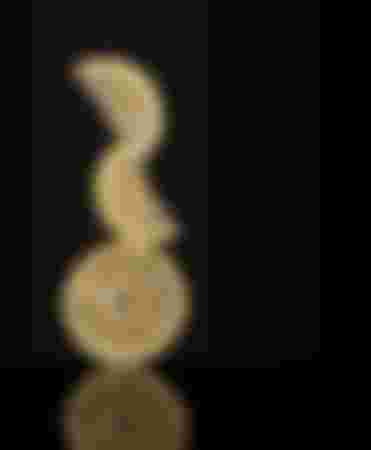If you want to calculate the fall of an object on the earth, you have to catch the gravity of the earth. Should the gravity of the moon be caught? Or can it be taken as zero for the sake of calculation? When can this be wrong? That discussion is being done with a small test and some simple calculations.
Newton's law of gravitation tells us that the gravitational force F of an object (on another object) is proportional to the square of their distance R:
F \ propto \ frac {1} {R ^ 2
That is, as the distance increases, the force decreases, but never becomes zero. Nevertheless it is often written in the textbook that after a certain distance the value of this ball decreases so much that it can be considered zero. But what exactly is that particular distance? Does the force of gravity have a definite value that can be taken to be zero if it is just as low? In this article we will try to explore these questions with a little experiment and some simple calculations.
Before I begin, let me ask the question again: How far can a gravitational ball be zero? If anyone asks this question, he should first ask the counter question: BRO🧐, what are you doing for which the question of not catching the gravitational ball is coming? What are you doing?🤔🤔 This is important to know because the movement of the moon around the earth and the movement of its satellite Europa around Jupiter, these two figures must be taken into account.

Let's say I'm thinking about the world right now and doing a very simple calculation. While standing, I brought an lemon to my head and released it. How long will it take for the lemon to fall to the ground? The gravity of the earth must be grasped to draw this figure. The question is, do you have to catch the gravity of the moon? Let's do that investigation.
The question of how long it will take for the lemon to fall to the ground can be answered in two ways. First of all, I can ask my father to take a video of me throwing my lemon on the camera of my smartphone. Then using a video player app (such as VLC) we can measure the time interval between the frame in which the video filer got the lemon out of hand and the frame in which the lemon touched the ground. See below for a detailed description of how I did this second step myself. (Let me say another small thing in this gap. I assume we can measure this time interval up to one decimal place per second. Why it is important will be understood after a while.)

Secondly, I can try to calculate the time using Newton's law of gravity and the second law of motion. If you can do it properly, the two values should be equal, right? Dad is in the kitchen right now, so we try to figure it out. The earth is pulling the lemon down by the ball of gravity, so he falls down. Suppose, the mass of the lemon is m, the mass of the earth is M, and the radius of the earth is R. Then according to Newton's law of gravity the amount of this ball is:
F = \frac{G \cdot M \cdot m}{R^2}
When the size of the ball is known, we can calculate the acceleration of the lemon using Newton's second law of motion:
g = \ frac {F} {m} = \ frac {G \ cdot M} {R ^ 2
Note the interesting thing: acceleration does not depend on the mass of the lemon! That is to say, the value of this acceleration should be the same whether it is a lemon pill or a medicine pill or a stone pill. In this equation we find the universal gravitational constant G = 6.67 x 10-11 m3 kg-1 s2, M = 5.97 x 1024 kg, and R = 6.37 x 106 m:
g = 9.8m / s ^ 2
Well why don't we count the value of g here to two or three places after the decimal? This is because one digit after the decimal is enough to compare the time I use this g with the time my father would tell me. Because as I said before, I was able to measure up to a tenth of a second while taking time out of the video. For example, if the time in my calculation is 0.78 s, its 8 digits are meaningless in the context of my test. Because even if it's 6 or 7 instead of 8, I can't understand how accurate it is in the way of measuring time from video. So in that case we can write 0.78 s ≈ 0.8 s as the approximate value up to the first place after the decimal point. Now we have to figure out how long it took to get out of this acceleration. Only then can it be seen whether it matches with the time measured from the hand-pen test. Suppose my height is h = 5 feet = 1.5 m, and it takes a lemon t to cover this distance. Then:
h = \frac{1}{2}gt^2\implies t = \sqrt\frac{2h}{g} \approx 0.6s
When my father finished cooking, he took a video of throwing lemons and measured the time from him. Match! 😄😄
[Dad, Mom, Aunt, you can play this game by grabbing someone and getting a smartphone. Just remember that from the height you are throwing a lemon or tennis ball or medicine pill, you have to calculate the value of t by replacing it with h in the above equation.]
So, Thatsenough for part 1 🧐. If you like this part i will describe the mystery in the part 2. For now, Happy reading 😁😁

